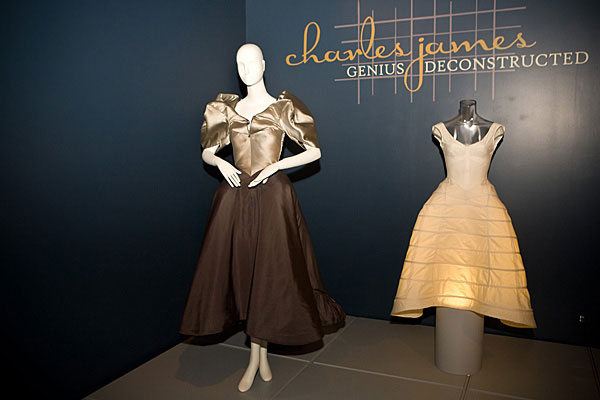
On Friday night, Chicago’s fashion elite gathered for an exclusive preview of the Chicago History Museum’s latest exhibit, Charles James: Genius Deconstructed.
The evening was a nod to the show’s curator, Timothy Long, who spent two years studying the garments of Charles James, a famous American couturier who began his career as a milliner in 1920s Chicago. Long wanted to prove that James was a virtuosic master of construction from the inside out, so he worked with a team to reproduce the skeleton of several dresses in the museum’s treasured collection of 17 James originals, one of the largest collections in the world.
Chicago caught up with Long before the big night and asked him a few questions about James and his stunning innovations.
Why are Charles James dresses so rare?
James was not a prolific designer in comparison to his contemporaries such as Balenciaga and Dior. They worked in a different way than James. We typically think of new collections for spring and fall, but James focused more on the development of concepts. He would focus on a bodice in 1951, then he would slightly modify that same bodice in 1954, and then he would sell it in the junior market in 1957. He looked at it like art development.
You open the exhibit with his famous Clover dress next to one of your interior reproductions. What’s so special about this piece?
This is one of his most iconic pieces because it really challenged dressmaking and what you could do with plastic and fabric, but what was exciting was that we discovered was how he got to this shape, which connects back to his days as a milliner. James continued to use hat-making techniques throughout the rest of his career and applied them to clothing. He incorporated materials that you could mold just like a hat. James remolded the mannequin to the shape that he wanted and then draped the material over that shape. He was then able to encircle that shape with plastic boning, which was new on the market. This discovery wasn’t an immediate realization. We found some things that we were confused by, but thankfully we were able to connect with some people who used to work with James.
How long were you working on this particular reproduction?
About six months. And that’s a few of us working full-time— constantly studying it, recutting it, and reshaping it.
James was a pioneer of these techniques. Do you see evidence of these techniques in other designers?
Designers constantly refer to him, but part of the difficulty is there are so few pieces out there, so a lot of the reference is to the exterior shape. It would be wonderful if, through our discovery, some of these techniques get revived. You see his techniques in dribs and drabs, but James was experimenting with things that people are just experimenting with now. James was doing it back in the 1940s.
GO: Charles James: Genius Deconstructed, now through April 16, at Chicago History Museum, 1601 N. Clark St.; 312-642-4600, chicagohs.org.
Photograph: James Trevenen



